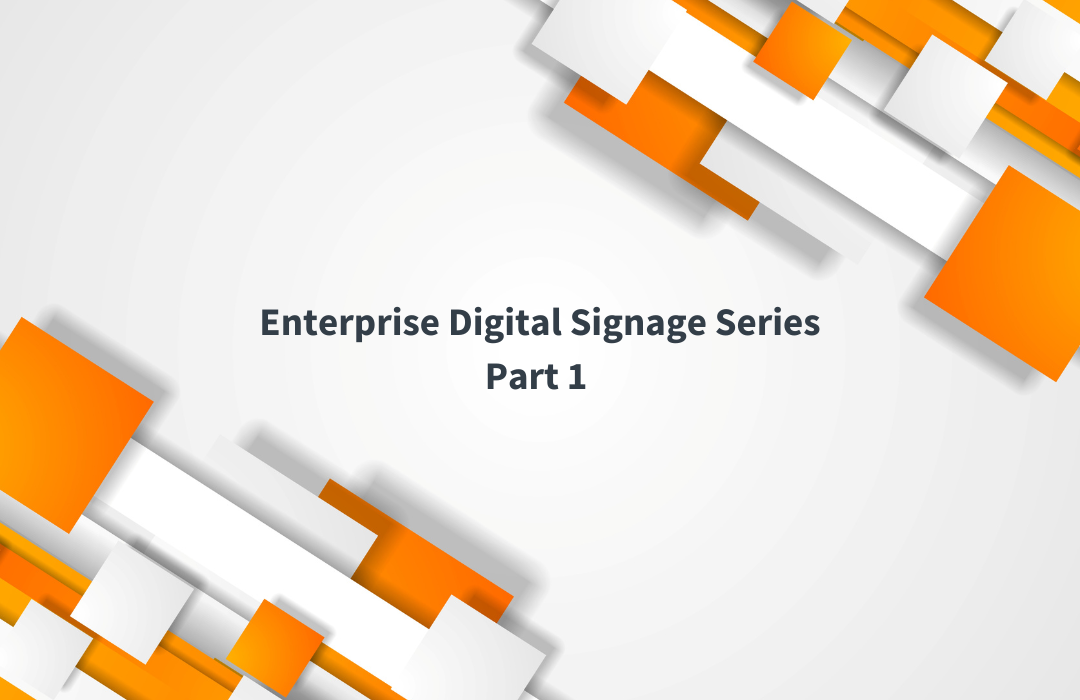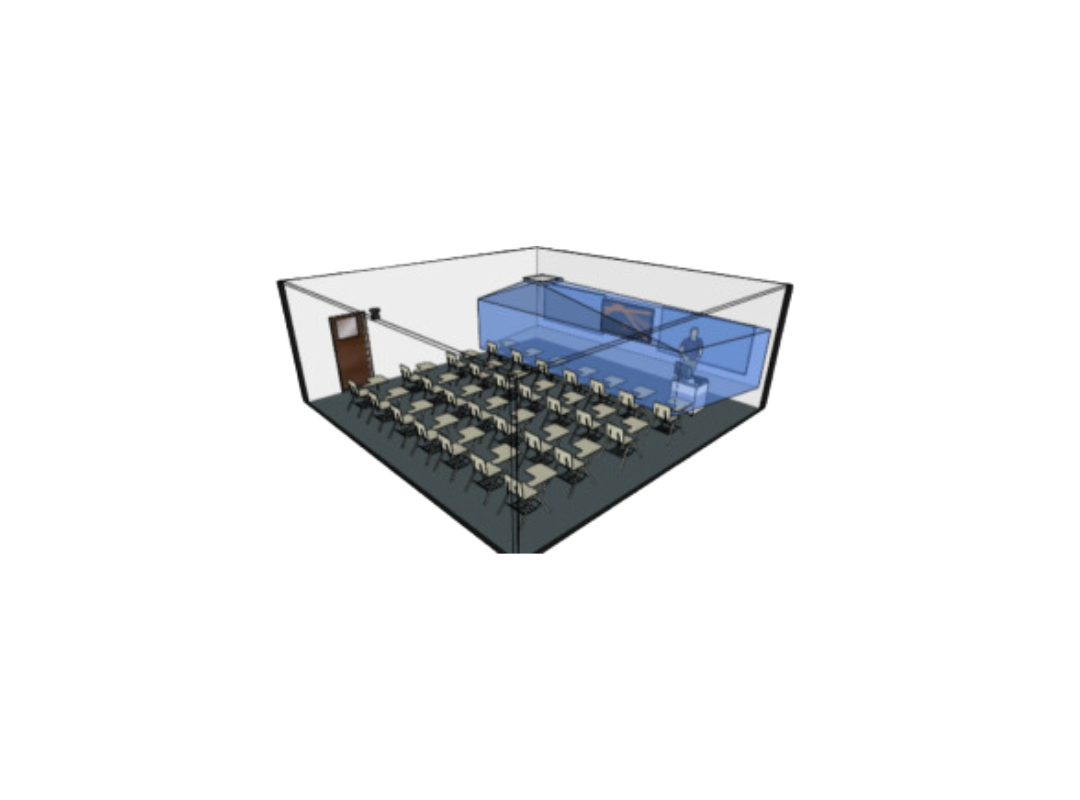Thirty years in the digital signage industry watching start-ups come and go, trends spark and fade and partnering with Fortune 500 companies has given visionary and thought leader Doug Freutel, keen insights about the fundamental requirements to achieve a successful digital signage implementation.
Most people understand the basic benefits of enterprise digital signage to improve communication, enhance brand awareness and increase engagement. But an even more compelling value proposition is the ability to bridge silos and act on real-time data to make better business decisions.
Physical displays are merely a mode of delivery. It takes data integration, optimized workflows and automation to bring your brand, messaging and metrics to life. But according to Freutel, enterprise clients share three similar requirements common to every digital communications strategy that often go overlooked and become a major challenge to the success in the future.
So what are the three similarities our enterprise digital signage clients share?
- Consolidation of enterprise content management platforms
- Delivery of effective contextual communication enterprise wide
- Real-time data integration and information/data visualization that drives decision makers
Read on to find out how each of these similarities affects enterprise signage in the modern workplace.
Interested in speaking with Doug directly? Click here to schedule your vision building session.
Content Management Platform Consolidation
One major concern for C-Suite officials is cost management, and one area where costs can easily spiral out of control is digital signage. Many organizations use multiple digital signage content management platforms across their organization. This is because most decisions for digital signage were made decentralized and purchased for specific areas of their business. It is not uncommon for enterprise organizations to have are least five different platforms they are supporting. They may have a main platform, but there are usually many outliers because they don’t have a single platform that can unify the entire enterprise. This leads to wasted time, resources and money having to manage, support and deal with multiple vendors all angling for their recurring revenue of software and support maintenance. Without clear standards and an understanding of how an enterprise solution can benefit your business, it’s easy to fall into this trap.
According to Freutel, the problem is a lack of corporate governance for digital signage. Departments often purchase solutions without considering the impact on the wider organization, leading to frustration for IT teams tasked with implementing new devices and applications on the network while maintaining security.
To avoid these issues, a central enterprise CMS platform can address all your communication needs, whether on-premises, on-network, or hosted. This platform can be used to address immediate departmental or corporate communications needs while also allowing for growth and expansion throughout the organization. By establishing a corporate digital content management system (DCMS) governance plan that includes procedures, steps, and thresholds for new signage applications, as well as defined service support and maintenance plans for the platform, you can ensure that everyone in the organization is on the same page.
Consolidating to a single digital content management solution used across your enterprise can also help you experience economies of scale.
Delivery of effective, contextual communication enterprise wide
With everyone on the same platform, this allows for clear messaging to not only be distributed across the organization, but a good enterprise solution can help ensure audiences are targeted with the messaging that is most important to them.
An enterprise platform allows for easy content contribution with metadata tagging to enable intelligence with the message so content can be filtered and distributed to the right audiences throughout the enterprise with great ease from content contributors. Whether you need to isolate communication by department, location, or work functions the right solution ensures a greater number of impressions based on content because the audience comes to expect the messaging to be relevant and have context to the time or location they are viewing.
Taking it a step further, with direct integration with current workflows and systems such as Microsoft Team and Sharepoint, Groupware, and any applications that the enterprise has in place, our objective is the best user interface for content contribution is no interface at all. We help clients integrate the Digital Signage system into existing workflows so contributors are working the way they have always worked, and the system intelligently extracts the right information and visualizations and delivers it with the right logic to the right audiences. This helps ensure that content is relevant and fresh for the end users.
This not only helps content contributors who are responsible for corporate wide communications, but also benefits departments which need to share important relevant information across silos of the organization which content is relevant to as well.
Real-time data integration and information/data visualization
Real time data integration and data visualization empowers teams to identify issues, collaborate and resolve them with speed and precision. Cutting through the clutter to bring data to life allows the right message to reach the right audience at the right time so the right call to action happens. Radiant Technology empowers our clients to do this with local team data, global data, and cross silo data sharing.
Local Team Data
Real time data integration can help teams identify on verses off track metrics, view individual and team performance, and monitor project and initiative status, performance, and flows. The key to effective real time data integrated into signage is the opportunities for calls to action. Data fed into the system shouldn’t just be presented, but an enterprise system can process logic and intelligence into the live data to then represent the most relevant information to the audience which might require a call to action. Calls to action include:
- generating awareness to a situation
- modifying efforts in the right direction
- institute ideas and actions for change
Data can either be represented in raw native form, can have conditional formatting to be applied to direct attention to particular data over others, or be visualized to show trends or comparative data that might insight observations. Data visualization can be gamified to make the data more fun and exciting which can motivate continuous improvement and friendly competition.
Global Data
Global corporate metrics and visualizations can be important for effectively communicating corporate wide initiatives, performance, and goals. Sharing corporate data allows unification and collective consciousness of employees to feel informed and connected to these corporate initiatives and also feel like they can contribute and impact those.
Dive Deeper into Enterprise Digital Signage in Part Two
In part two of our Enterprise Digital Signage Series we will explore how cross silo data sharing allows organizations to be secured and the benefits of sharing intelligence between groups and organizational silos.
Highlights include:
- Increase information retention with digital experiences
- Accelerate decision making with data visualization
- Bridge silos with automation
- Drive productivity
- Connect teams from anywhere
- Maximize system uptime and reliability
Working with Radiant Technology Group
By consolidating enterprise content management platforms corporations across the board can begin to deliver contextual communications and integrate real-time data with data visualization more effectively. This enables teams to make better business decisions and take steps towards transformative digital transformations.
At Radiant we have more than 20 years of experience helping enterprise organizations truly experience the transformational impacts that a DCMS can have verses just experiencing digitization which are more incrementally impactful.






